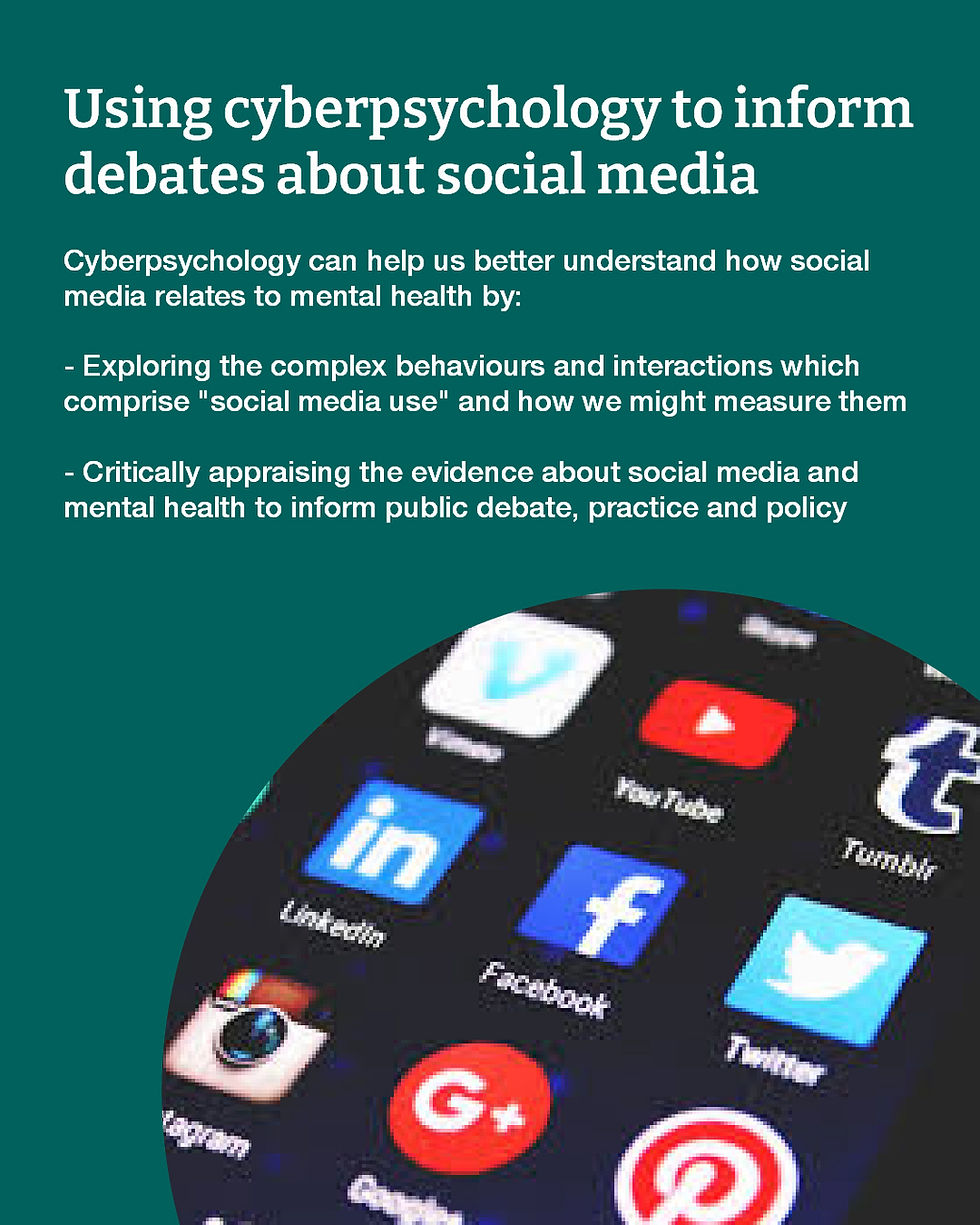Applying theories from cyberpsychology to understand digital engagement
- LindaKKaye

- Jan 20
- 3 min read
In a digitally-connected world, there are multiple ways that we might seek to engage, interact and communicate with one another. Post-COVID, we have observed that there is increased demand for things like educational services and training to be offered in online formats, via things like webinars, online workshops or for “on-demand” content or products to be available to access. Whilst this is arguably beneficial for increasing accessibility and reach of services, it does pose issues about how to make these services equally as effective as their offline counterparts. Typical types of challenges might relate to uncertainties about what the best methods for optimising engagement and how practitioners might measure this.
To understand digital engagement, we perhaps need to be clear on what behaviours might underpin this. This will vary depending on the specific type of platform or format we are referring to. Within cyberpsychology, we typically use the term “online behaviour” to refer to the way we engage in online worlds. However, “online behaviour” is arguably very broad and could refer to a myriad of types of behaviours.
We recently introduced the “Online Behaviour Taxonomy” (Kaye et al., 2022) which outlines three distinct types of behaviour which might sit under this:
· Online-exclusive behaviour - behaviours which natively and exclusively take place online for user and/or audience (e.g., typing, scrolling, social media content interactions, internet searching).
· Online-mediated behaviour- behaviours which take place offline for user and/or audience but are mediated by internet-enabled platforms (e.g., video calls, live streams, webinars).
· Online-recorded behaviour- behaviours which take place offline but are concurrently or subsequently recorded online (e.g. Strava, fitness app metrics, virtual assistants)
The source of behaviour (ie., whether it originates online or offline) explicitly underpins these three types of behaviours. In some cases, the source of behaviour is offline and might typically be considered “real world behaviour” but it is the introduction of an internet-enabled device which can communicate this online (ie. online-mediated behaviour). In other cases, the behaviour itself might originate online and is communicated as such (e.g., online-exclusive behaviour).
Therefore, it is important to distinguish the constituent types of behaviours which are relevant to different types of online services, before understanding how this might relate to engagement. However, each of these types of online behaviours are not necessarily discrete from one another. That is, it is conceivable that there might be various types of behaviours which occur concurrently within any given context. For example, on a webinar, this might primarily be considered online-mediated behaviour but there could equally be secondary types of behaviour taking place, such as online-exclusive via the use of chat functions (see Figure 1 below for a visual example of this). With this is mind, understanding what “engagement” looks like, might look different in respect of these various types of behaviour so this might be multifaceted.

However, thinking more broadly about “engagement”, it is also important to consider the fact that this can extend wider than behavioural engagement. Whilst this might typically be measured by things like number of sign-ups/attendance, number of views, etc, engagement is much broader. Educational engagement for example, is multi-faceted, including three components: behavioural, emotional (e.g., sense of belonging, enjoyment), and cognitive (e.g., task focus, perceptions of learning). Relying on specific online-exclusive behaviours or interactions such as analytics only really relates to behavioural engagement, and may signal users’ engagement only with using the technology itself and not necessarily with educational experiences underpinning it. This is where emotional and cognitive components become critical. Emotional engagement can be developed from a sense of belonging or connection, such as to peers or to a community. Boosting a sense of collective identity may be part of the way to promote emotional engagement. So to understand digital engagement, it isn’t just the case that we should focus on behaviour, but also what the underpinning emotional and cognitive experiences are associated with educational services and provision.
Take home points:
· In line with the Online Behaviour Taxonomy, identify what specific types of behaviours are required for “engaging” with the specific educational service.
· But, beyond behaviour, also consider what the relevant emotional and cognitive aspects of engagement might be.
References
Kaye, L. K., Rousaki, A, Joyner, L. C., Barrett, L. A. F., & Orchard, L. J. (2022). The Online Behaviour Taxonomy: A Conceptual Framework to Understand Behaviour in Computer-mediated Communication. Computers in Human Behavior, 107443. https://doi.org/10.1016/j.chb.2022.107443



Comments